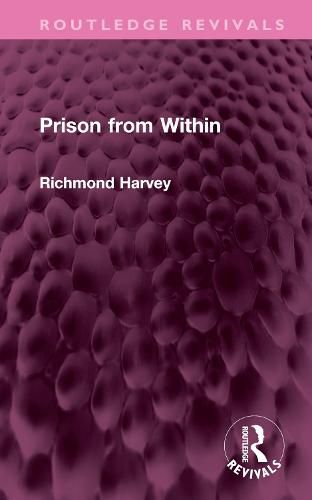Readings Newsletter
Become a Readings Member to make your shopping experience even easier.
Sign in or sign up for free!
You’re not far away from qualifying for FREE standard shipping within Australia
You’ve qualified for FREE standard shipping within Australia
The cart is loading…






First published in 1937, Prison from Within is a first-person account of a prisoner sentenced to imprisonment for eighteen months for fraud. It is a linear narrative honestly recording the various facets of prison culture, along with candid character analysis. The book touches upon philosophical notions of sin and remorse; the social groups of prisoners and the camaraderie shared among them; the poor living condition of prisons and the exploitation of prison labour; and the general politics of the time. The book successfully humanizes criminals and is an excellent reminder of the fact that the prison industry has only worsened with time. Prisons were designed for the purpose of ‘cleansing’ bourgeoise society; therefore, it is important to revisit the institution and question its utility in modern times. This book will be of interest to students and teachers of history, sociology, criminology, criminal justice, literature, and penology.
$9.00 standard shipping within Australia
FREE standard shipping within Australia for orders over $100.00
Express & International shipping calculated at checkout
First published in 1937, Prison from Within is a first-person account of a prisoner sentenced to imprisonment for eighteen months for fraud. It is a linear narrative honestly recording the various facets of prison culture, along with candid character analysis. The book touches upon philosophical notions of sin and remorse; the social groups of prisoners and the camaraderie shared among them; the poor living condition of prisons and the exploitation of prison labour; and the general politics of the time. The book successfully humanizes criminals and is an excellent reminder of the fact that the prison industry has only worsened with time. Prisons were designed for the purpose of ‘cleansing’ bourgeoise society; therefore, it is important to revisit the institution and question its utility in modern times. This book will be of interest to students and teachers of history, sociology, criminology, criminal justice, literature, and penology.